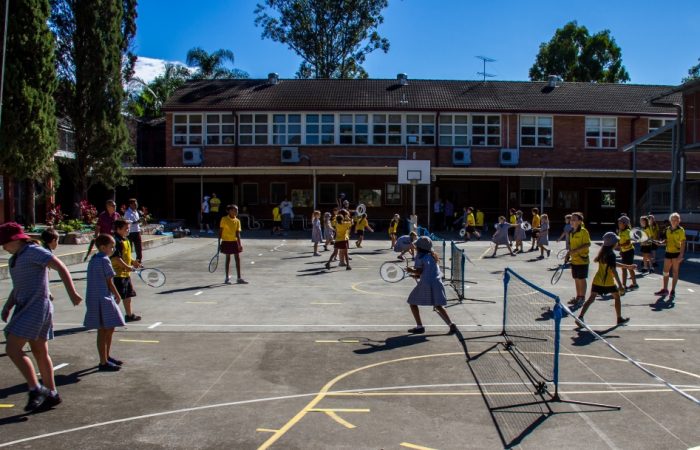TA joins calls for health to be put at education forefront
Influential associations believe that health and sport need to be at the forefront of every child’s education.

Australia’s peak education and health, sport and physical education professional bodies – including Tennis Australia – have voiced collective concern about the recent new evidence showing that children are being put at risk of chronic disease and having their academic progress impeded by a failure to provide quality health and physical education in all schools.
In their first joint statement this year, the influential associations warn that now more than ever before, health education, physical education and sport needs to be at the forefront of every child’s education.
“Findings from the Australian Lifestyle of our Kids (LOOK) study, led by Professor Dick Telford, have demonstrated that children who were taught quality health and physical education entered secondary school with a substantially increased progression in nationally assessed numeracy and literacy, in addition to a range of important health benefits,” said National Executive Director of the Australian Council for Health, Physical Education and Recreation (ACHPER), Ms Alison Turner.
“This recent new evidence of the health and academic benefits, as well as the extremely important social benefits, vindicate the premise that mind and body work together for optimal educative development of the child,” she added.
“We highlight a collective need for Principals and Government to start listening to what the LOOK findings prove, which is that quality health and physical education improves NAPLAN scores in schools, especially numeracy.”
Tennis Australia’s philosophy is closely aligned with the peak education bodies’, according to CEO Craig Tiley.
“Sport has, and continues to play, a very significant role in the lives of all Australian families and communities,” he said. “Schools provide great opportunities for children to participate in sports, which in turn develops the physical, social and emotional skills which are critical to a child’s development.
“At Tennis Australia, we are very proud to support Australian schools and teachers in the delivery of sustainable health and physical education programs. Tennis values the importance of health and physical education, and the role which sports play in providing opportunities for children to get active.”
Executive Director of the Australian Secondary Principals Association, Mr Rob Nairn, said that the importance of specialised expertise and curriculum knowledge for the teaching of Health and Physical Education in secondary schools can no longer be ignored.
“Professor Dick Telford’s work gives us further information to enable teachers to deliver quality Health and Physical Education and advocate for holistic student wellbeing and improved academic outcomes,” he said.
President of the Australia Primary Principals Association, Dennis Yarrington, said that improving the support and access to a Physical Education specialist teacher for classroom teachers will ensure all students will have access to high quality Health and Physical Education lessons.
“We need to ensure our graduate primary teachers are entering the school with the confidence and competence to teach the Health and Physical Education learning area of the curriculum,” he said.
“This challenge is not just for schools to solve. It requires a community, government and other organisations collaborative response. This can be best achieved through a National Physical Activity Strategy that will provide direction for the future. We need to see this as investing for a more active and healthier community and for the future health of our children.”